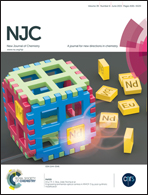A Li4Ti5O12–rutile TiO2 nanocomposite with an excellent high rate cycling stability for lithium ion batteries†
Abstract
A lithium titanate (Li4Ti5O12)–rutile titanium dioxide (TiO2) nanocomposite was synthesized using a sol-hydrothermal synthesis method using lithium hydroxide monohydrate and titanium(IV) t-butoxide as precursors. The material obtained exhibited a micron-sized flower-like morphology (3 μm to 4 μm) consisting of layer-stacked nanosheets. In the composite material, nanosized rutile TiO2 sheets were generated in situ and adhered on to the Li4Ti5O12 sheets. These nanosized rutile TiO2 sheets in the Li4Ti5O12–rutile TiO2 composite play an important role in producing numerous Li4Ti5O12/rutile TiO2 two-phase interfaces which act as tiny reaction sites for rapid lithium intercalation and extraction, for inhibiting the side reactions with electrolyte, and avoiding the aggregation of primary nanosheets during the long-term cycling process. Benefiting from these unique features, the Li4Ti5O12–rutile TiO2 composite exhibits excellent rate capability (a reversible capacity of 148, 146 and 142 mA h g−1 at 5, 10 and 20 C, respectively, 1 C = 175 mA g−1) and outstanding long-term cycling stability (only 6.3% capacity loss after 1000 cycles at a high rate of 10 C).


 Please wait while we load your content...
Please wait while we load your content...